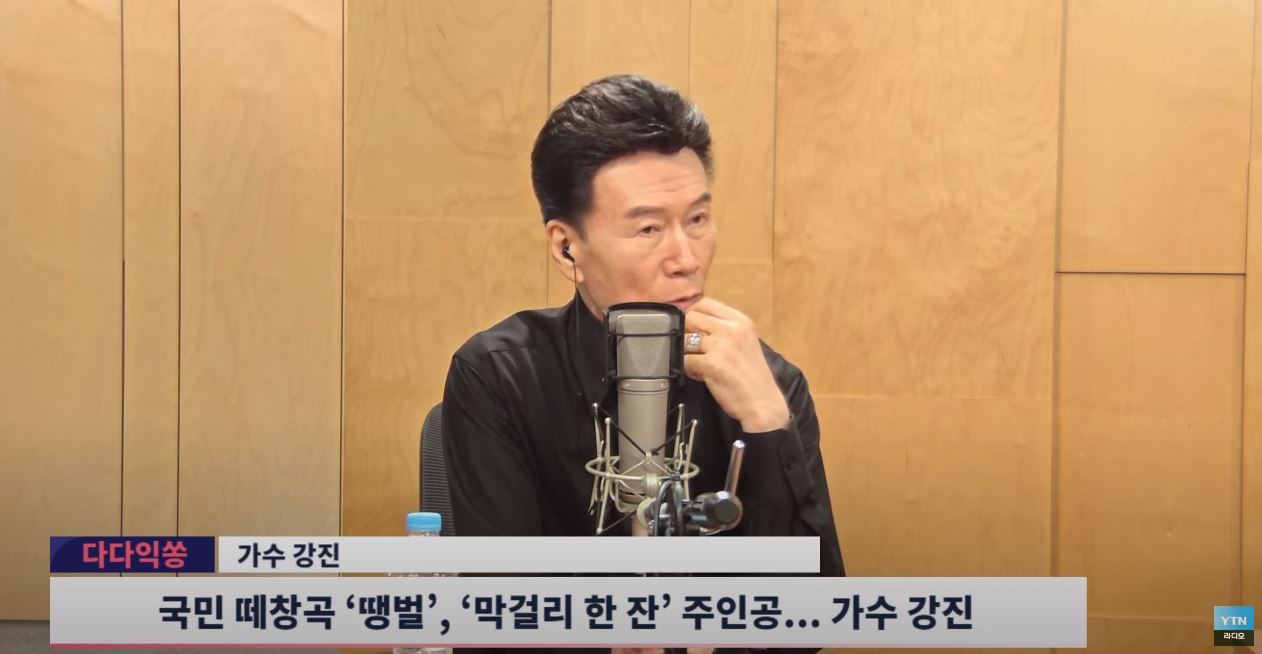"Economic stimulus is more urgent"...BOK slashes rate to 3.0 percent
BOK cuts key rate to 3.25 → 3.0% in defiance of market expectations
"Increased downward pressure on growth behind rate cut"
Lee Chang-yong said, "Uncertainty in the trade environment grows after Trump's election"
Bank of Korea's Economic Growth Outlook...2.2% this year, 1.9% next year.
"Increased downward pressure on growth behind rate cut"
Lee Chang-yong said, "Uncertainty in the trade environment grows after Trump's election"
Bank of Korea's Economic Growth Outlook...2.2% this year, 1.9% next year.
[Anchor]
The Bank of Korea's Monetary Policy Committee has cut its key interest rate to 3.0 percent from 3.25% this year.
There were many expectations of a freeze due to currency instability, but I saw that economic stimulus was more urgent than exchange rates.
I'll connect you with reporters for more information. Reporter Ryu Hwan Hong!
Can you tell us the background of the Bank of Korea's Monetary Policy Committee's surprise cut?
[Reporter]
Yes, the Monetary Policy Committee of the Bank of Korea held a meeting from 9 a.m., and decided to cut the base rate around 9:50 a.m.
The base rate was cut from 3.5% to 3.25% on the 11th of last month, but it was cut to 3.0% again this month.
This further widened the gap between South Korea and the U.S. policy rates from 1.5% to 1.75%.
Last month, the monetary policy stance changed from tightening to easing for the first time in three years and two months, continuing its easing stance.
The central bank said the main reason for the rate cut was the increased downward pressure on growth in the direction of monetary policy.
It explained that although exchange rate volatility has increased, downward pressure on growth has increased amid stabilizing inflation and a slowdown in household debt.
Let's listen to Bank of Korea Governor Lee Chang-yong.
[Lee Chang-yong / Governor of the Bank of Korea: Exchange rate volatility has increased, but downward pressure on growth has increased amid steady inflation and a slowdown in household debt growth. As a result, the Monetary Policy Committee today decided it was appropriate to mitigate downside risks to growth by further cutting the benchmark interest rate.]
Bank of Korea Governor Lee Chang-yong told a news conference after the Monetary Policy Committee meeting that four of the six Monetary Policy Committee members, excluding him, were cut and two were frozen.
Lee said it was a tougher decision than ever, referring to the uncertainty in the trade environment that has grown since former U.S. President Trump's victory in the presidential election.
This year, the growth rate of our economy has been slowing since the second quarter, and next year's outlook is not good due to changes in external conditions.
Immediately after the decision to cut interest rates, the Bank of Korea released a revised forecast for economic growth this year and next year.
In view of this, this year's economic growth forecast was lowered from 2.4% to 2.2%.
It also lowered its economic growth forecast for next year from 2.1% to 1.9%.
Considering that Korea's potential growth rate is 2%, it means that next year will grow less than the potential growth rate.
The Bank of Korea's Monetary Policy Committee seems to have decided that it is necessary to preemptively lower interest rates at a time when growth is expected to be 1.9 percent next year.
Fortunately, prices are stabilizing.
The Bank of Korea predicts that consumer price growth will fall to 2.3% this year from 2.5% previously forecasted.
Consumer price growth next year is also expected to fall further to 1.9% from the previous forecast of 2.1%.
Household debt has also been on a downward trend since its peak in August.
The problem is the exchange rate.
This is because the won-dollar exchange rate has continued to rise, exceeding the psychological Maginot line of 1,400 won since former President Trump won the U.S. presidential election this month.
Lower interest rates could further stimulate the already shaky exchange rate.
The central bank said it will manage the exchange rate volatility with the government through various market stabilization measures.
The won-dollar exchange rate, which rose to 1,396 won as of 8:25 a.m. in the Seoul foreign exchange market, is now fluctuating slightly.
I'm YTN's Ryu Hwan Hong.
※ 'Your report becomes news'
[Kakao Talk] YTN Search and Add Channel
[Phone] 02-398-8585
[Mail] social@ytn.co.kr
The Bank of Korea's Monetary Policy Committee has cut its key interest rate to 3.0 percent from 3.25% this year.
There were many expectations of a freeze due to currency instability, but I saw that economic stimulus was more urgent than exchange rates.
I'll connect you with reporters for more information. Reporter Ryu Hwan Hong!
Can you tell us the background of the Bank of Korea's Monetary Policy Committee's surprise cut?
[Reporter]
Yes, the Monetary Policy Committee of the Bank of Korea held a meeting from 9 a.m., and decided to cut the base rate around 9:50 a.m.
The base rate was cut from 3.5% to 3.25% on the 11th of last month, but it was cut to 3.0% again this month.
This further widened the gap between South Korea and the U.S. policy rates from 1.5% to 1.75%.
Last month, the monetary policy stance changed from tightening to easing for the first time in three years and two months, continuing its easing stance.
The central bank said the main reason for the rate cut was the increased downward pressure on growth in the direction of monetary policy.
It explained that although exchange rate volatility has increased, downward pressure on growth has increased amid stabilizing inflation and a slowdown in household debt.
Let's listen to Bank of Korea Governor Lee Chang-yong.
[Lee Chang-yong / Governor of the Bank of Korea: Exchange rate volatility has increased, but downward pressure on growth has increased amid steady inflation and a slowdown in household debt growth. As a result, the Monetary Policy Committee today decided it was appropriate to mitigate downside risks to growth by further cutting the benchmark interest rate.]
Bank of Korea Governor Lee Chang-yong told a news conference after the Monetary Policy Committee meeting that four of the six Monetary Policy Committee members, excluding him, were cut and two were frozen.
Lee said it was a tougher decision than ever, referring to the uncertainty in the trade environment that has grown since former U.S. President Trump's victory in the presidential election.
This year, the growth rate of our economy has been slowing since the second quarter, and next year's outlook is not good due to changes in external conditions.
Immediately after the decision to cut interest rates, the Bank of Korea released a revised forecast for economic growth this year and next year.
In view of this, this year's economic growth forecast was lowered from 2.4% to 2.2%.
It also lowered its economic growth forecast for next year from 2.1% to 1.9%.
Considering that Korea's potential growth rate is 2%, it means that next year will grow less than the potential growth rate.
The Bank of Korea's Monetary Policy Committee seems to have decided that it is necessary to preemptively lower interest rates at a time when growth is expected to be 1.9 percent next year.
Fortunately, prices are stabilizing.
The Bank of Korea predicts that consumer price growth will fall to 2.3% this year from 2.5% previously forecasted.
Consumer price growth next year is also expected to fall further to 1.9% from the previous forecast of 2.1%.
Household debt has also been on a downward trend since its peak in August.
The problem is the exchange rate.
This is because the won-dollar exchange rate has continued to rise, exceeding the psychological Maginot line of 1,400 won since former President Trump won the U.S. presidential election this month.
Lower interest rates could further stimulate the already shaky exchange rate.
The central bank said it will manage the exchange rate volatility with the government through various market stabilization measures.
The won-dollar exchange rate, which rose to 1,396 won as of 8:25 a.m. in the Seoul foreign exchange market, is now fluctuating slightly.
I'm YTN's Ryu Hwan Hong.
※ 'Your report becomes news'
[Kakao Talk] YTN Search and Add Channel
[Phone] 02-398-8585
[Mail] social@ytn.co.kr
[Copyright holder (c) YTN Unauthorized reproduction, redistribution and use of AI data prohibited]
Editor's Recomended News
The Lastest News
-
Ruling Party "Private Special Prosecutor for Minjoo and Lee Jae-myung..."The constitutional history will be blotted"
-
Lee Jae-myung said, "If political retaliation continues, the state of civil war..."I have to cut it off at my own stage".
-
재생
 Cold low pressure + hot ocean "Wrong Meeting"...50cm. "Snow bomb".
Cold low pressure + hot ocean "Wrong Meeting"...50cm. "Snow bomb". -
Amendments to the Permanent Special Prosecutors' Rule on the Exclusion of the Right to Recommend the Ruling Party passed the opposition-led plenary session.

![[Breaking News] \'Bribery charges\' Minjoo Shin Young-dae\'s arrest motion \'disapprove\'](http://image.ytn.co.kr/general/jpg/2024/1128/202411281449131270_h.jpg)






